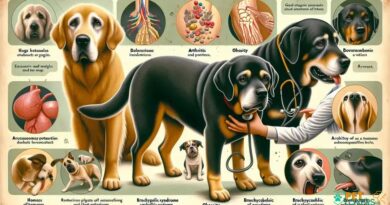What is Treat cravings
What is Treat Cravings?
Treat cravings refer to the intense desire dogs experience for specific types of snacks or treats. These cravings can be triggered by various factors, including the scent of food, the sight of their favorite treats, or even the sound of a treat bag rustling. Understanding treat cravings is essential for pet owners who want to maintain their dog’s health while satisfying their desires.
Understanding the Psychology Behind Treat Cravings
Dogs, much like humans, have psychological triggers that can lead to cravings. The association of certain smells or experiences with positive outcomes, such as receiving a treat after performing a trick, can create a strong desire for those treats. This behavior is rooted in conditioning, where dogs learn to associate specific stimuli with rewards, leading to treat cravings.
Common Causes of Treat Cravings in Dogs
Several factors can contribute to treat cravings in dogs. These include hunger, boredom, and the desire for attention. A dog that is not adequately fed may develop a stronger craving for treats as a way to supplement its diet. Similarly, a bored dog may seek out treats as a form of entertainment or engagement, highlighting the importance of mental stimulation in a dog’s daily routine.
How to Manage Your Dog’s Treat Cravings
Managing treat cravings involves a balanced approach that considers your dog’s dietary needs and behavioral health. Providing regular meals and ensuring that your dog is mentally stimulated can help reduce the intensity of treat cravings. Additionally, offering healthy treats in moderation can satisfy your dog’s desires without compromising their health.
Healthy Alternatives to Satisfy Treat Cravings
When addressing treat cravings, it’s essential to consider healthier alternatives. Instead of high-calorie treats, opt for fruits and vegetables that are safe for dogs, such as carrots or apple slices. These options can provide the crunch and satisfaction dogs crave while being lower in calories and higher in nutrients.
The Role of Training in Managing Treat Cravings
Training plays a crucial role in managing treat cravings. Teaching commands such as “leave it” or “wait” can help dogs learn self-control when it comes to treats. Positive reinforcement training can also be used to reward desired behaviors, which can reduce the frequency of treat cravings by providing dogs with alternative rewards.
Recognizing When Treat Cravings Become a Problem
While treat cravings are normal, they can sometimes escalate into problematic behaviors, such as begging or stealing food. It’s essential for dog owners to recognize when these behaviors become excessive and to take steps to address them. This may involve consulting with a veterinarian or a professional dog trainer to develop a tailored approach.
Impact of Treat Cravings on Dog Health
Excessive treat cravings can lead to health issues such as obesity, dental problems, and digestive issues. It’s vital for dog owners to monitor their pet’s treat intake and ensure that it aligns with their overall dietary needs. Regular veterinary check-ups can help identify any health concerns related to treat cravings.
Conclusion: Embracing Treat Cravings Responsibly
Understanding and managing treat cravings in dogs is an essential aspect of responsible pet ownership. By recognizing the underlying causes and implementing strategies to address them, dog owners can ensure their pets remain happy and healthy while still enjoying the occasional treat.



